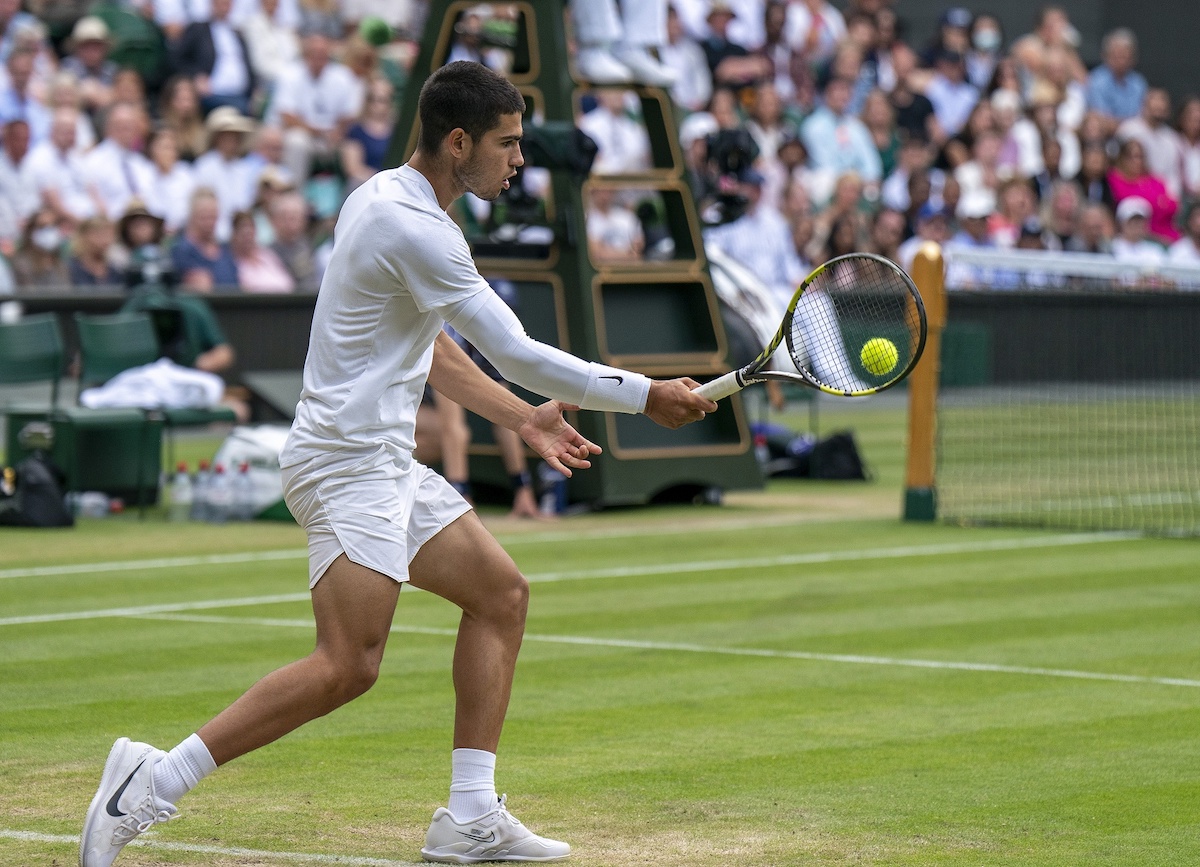It’s possibly been as perfect a start to a career as there’s ever been for Carlos Alcaraz. He seemingly fast tracked numerous milestones last year, including a first Major title and World #1 finish, all at just 19 years of age. A meteoric rise quickly brought about equally lofty expectations and for the most part, Alcaraz has met them every step of the way. Yet after a difficult loss to Novak Djokovic in the semifinals of Roland Garros, one could argue thumbs were down on Alcaraz as much as we’ve seen thus far in his brief career.
Carlos Alcaraz experienced his first major roadblock at the French Open this year
Seen as the red hot favorite to lift the title in Paris, Alcaraz’s body was unable to keep up with the cauldron of stress that comes with facing a Big 3 member at the back end of a Major at the first time of asking seemed to bring his year to a crossroads. Heading into grass season, Alcaraz remains an unknown quantity. Of the two Slams completed this season, Alacaraz was sidelined in Australia due to injury and then left just as helpless on account of cramps by the end of the French Open. His skeptics were given the chance to jump at the prospect that perhaps the golden boy wasn’t all he’d been cracked up to be and even neutrals could be left wondering whether expectations should be reevaluated moving forward.
Transitioning to grass seemed like it would only amplify that type of sentiment with Alcaraz’s participation in Queens at the Cinch Championships, marking just a third professional appearance on grass. This was buoyed with a shaky at best debut at the tournament against Arthur Rinderknech that saw Alcaraz rally from a set down, needing a deciding set tiebreak to get over the line. Even coming into the grass season, Carlos Alcaraz himself seemed more intent on simply getting more experience and feel on the grass rather than setting his sights on claiming any more titles–in stark contrast to the lofty aspirations he’s typically and openly held for himself.
Alcaraz has responded to adversity like a champion in his most unfamiliar of conditions
What’s followed is a script we’ve been all too familiar with watching the Big 3 over the last two decades: staying alive without their best stuff and then making remaining opponents pay for not snuffing out the generational talent early. Alcaraz finished this week winning his last ten sets, following up his opener with convincing wins over Jiri Lehecka, Grigor Dimitrov, Sebastian Korda, and Alex de Minaur–the latter three who have proven to be formidable on grass on their day. This week, Alcaraz put forth the entire range of his well rounded arsenal in ways we’ve yet to see from him.
According to a TennisTV graphic from his semifinal, throughout Queens Alcaraz was slicing 43% of his backhands compared to 15% at Roland Garros, a tactic that caters to a slick, low bouncing grass court. Similarly, he employed more serve-and-volley, showed greater commitment to hitting the flat mid 130 mph bomb serves, and was visually much more comfortable moving on the surface. All of that packaged together rendered all of his remaining opponents helpless.
In short order, the 20-year-old Alcaraz is putting many of the foundational pieces together to finding footing on grass. He’s reinvented his game to cement himself as as strong a contender for Wimbledon as anybody not named Djokovic in a relatively open grass field. Beyond the on-court brilliance, what can be lost are the intangible qualities, being able to quickly regroup to shrug off disappointment as well as an openness to going outside a comfort zone to adapt that Alcaraz has put forth over the last week. To be as accomplished as Alcaraz is at his age, it’s needless to say that he’s a fast learner. While this week is still no guarantee of a deep Wimbledon run on the horizon, Alcaraz is quickly growing acclimated to one of the few unfamiliar situations tennis can still throw at him and has positioned himself to show that even on the grass he may very well still be ahead of schedule.
Main Photo Credit: Susan Mullane-USA TODAY Sports






